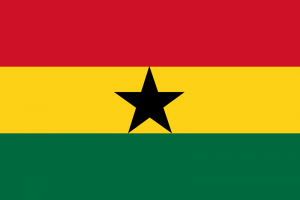Language/Twi/Culture/Traditional-Dance
| ◀️ Traditional Music — Previous Lesson |
Traditional dance is an integral part of Twi culture, and it holds immense cultural significance. In this lesson, we will explore the world of traditional Twi dance, learning about its history, cultural importance, and the various dance styles and movements that make it unique. By the end of this lesson, you will gain a deeper understanding of the rich tradition of Twi dance and its connection to the Twi language.
Historical and Cultural Importance of Traditional Dance[edit | edit source]
Traditional dance in Twi culture has a long and storied history, dating back centuries. It has been a means of cultural expression, storytelling, and community bonding. Traditional dances often have deep cultural and spiritual significance, reflecting the values, beliefs, and traditions of the Twi people.
Dance has been a way for Twi communities to preserve their cultural heritage and pass it down to future generations. It is often performed during important cultural events, such as festivals, weddings, and funerals. Traditional dance is a way for the Twi people to connect with their ancestors, honor their traditions, and celebrate their identity as a community.
Various Dance Styles and Movements in Traditional Twi Dance[edit | edit source]
Traditional Twi dance encompasses a wide range of styles and movements, each with its own unique characteristics and purposes. Let's explore some of the most prominent dance styles in Twi culture:
Kete[edit | edit source]
Kete is a popular traditional dance style in Twi-speaking regions. It is often performed during festivals and other joyous occasions. Kete involves intricate footwork, hand gestures, and rhythmic movements. The dancers wear colorful traditional attire and often carry fans or umbrellas as part of their performance.
Adowa[edit | edit source]
Adowa is another widely recognized dance style in Twi culture. It originated from the Ashanti people and is known for its graceful and rhythmic movements. Adowa is often performed during funerals and other solemn occasions. The dancers typically wear traditional clothing, including the Kente cloth, and use handkerchiefs as props.
Agbadza[edit | edit source]
Agbadza is a vibrant and energetic dance style that originated from the Ewe people but has become popular throughout Ghana. It is characterized by fast-paced movements, intricate footwork, and synchronized group formations. Agbadza is often accompanied by live drumming and is performed during social gatherings and celebrations.
Akom[edit | edit source]
Akom is a dance style that originated from the Fante people of Twi-speaking regions. It is performed during festivals and other joyous events. Akom is known for its lively and energetic movements, with dancers often forming circles and moving in sync with the rhythm of the music. The dancers wear colorful traditional attire and may carry props such as baskets or pots.
Bamaaya[edit | edit source]
Bamaaya is a traditional dance style that originated from the Gurunsi people of northern Ghana. It is characterized by slow and graceful movements, often imitating the movements of animals or natural elements. Bamaaya is performed during important cultural events and rituals and is known for its spiritual and symbolic significance.
Cultural Variations in Traditional Dance[edit | edit source]
While traditional dance is an integral part of Twi culture, there are also regional variations in the styles and interpretations of dance. Different Twi-speaking regions may have their own unique dance styles and movements, influenced by local traditions and customs.
For example, the Ashanti region is known for its vibrant and elaborate dance styles, such as Adowa and Kete. These dances often involve intricate footwork and hand gestures, reflecting the rich cultural heritage of the Ashanti people.
In the Fante-speaking regions, dance styles like Akom are popular, characterized by lively and energetic movements. These dances often incorporate elements of storytelling and community participation.
In the Ewe-speaking regions, dance styles like Agbadza are prominent. These dances are known for their fast-paced movements and synchronized group formations, reflecting the vibrant and dynamic nature of Ewe culture.
It is important to note that while there are regional variations, traditional dance remains a unifying force within the Twi-speaking community, connecting people across different regions and preserving the cultural heritage of the Twi people.
Exercises and Practice Scenarios[edit | edit source]
1. Research and choose a traditional Twi dance style that interests you. Write a short essay describing the history, cultural significance, and unique characteristics of the dance style.
2. Watch a video of a traditional Twi dance performance. Take notes on the movements, costumes, and music. Discuss your observations with a classmate or write a reflection on your experience.
3. Practice basic dance movements from a traditional Twi dance style of your choice. Pay attention to the rhythm, footwork, and coordination. Record yourself and watch the recording to identify areas for improvement.
4. Create a dance routine inspired by traditional Twi dance styles. Incorporate elements from different styles and add your own creative flair. Perform the routine for your classmates or record a video to share with others.
5. Interview an older family member or community member who has knowledge of traditional Twi dance. Ask them about their experiences with traditional dance, the significance of different dance styles, and any memorable dance performances they have witnessed.
Conclusion[edit | edit source]
Traditional Twi dance is a vibrant and integral part of Twi culture, reflecting the history, values, and traditions of the Twi people. Through its various dance styles and movements, traditional dance serves as a means of cultural expression, storytelling, and community bonding. By exploring the world of traditional Twi dance, we gain a deeper understanding of the rich tradition of Twi culture and its connection to the Twi language.
Other Lessons[edit | edit source]
| ◀️ Traditional Music — Previous Lesson |

